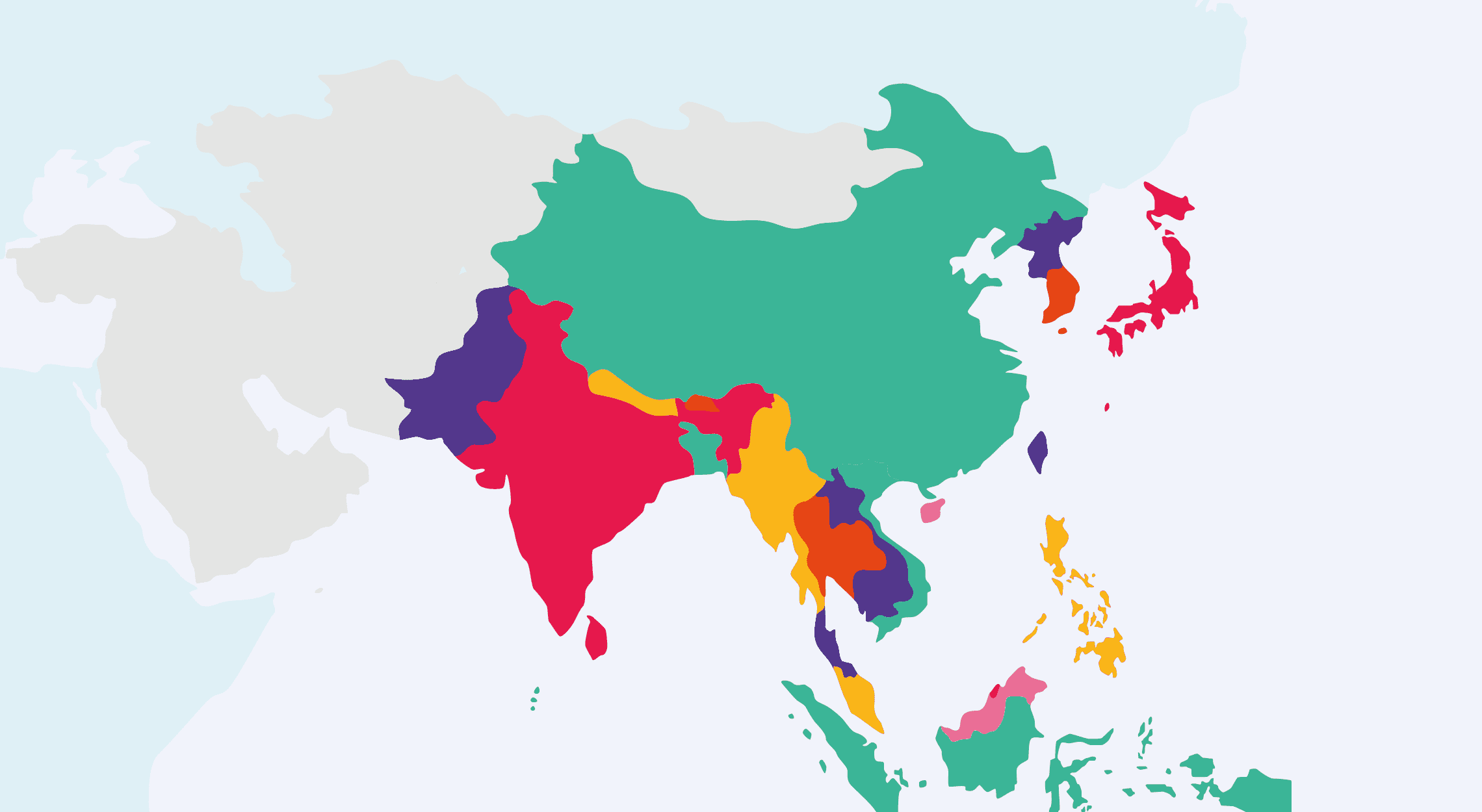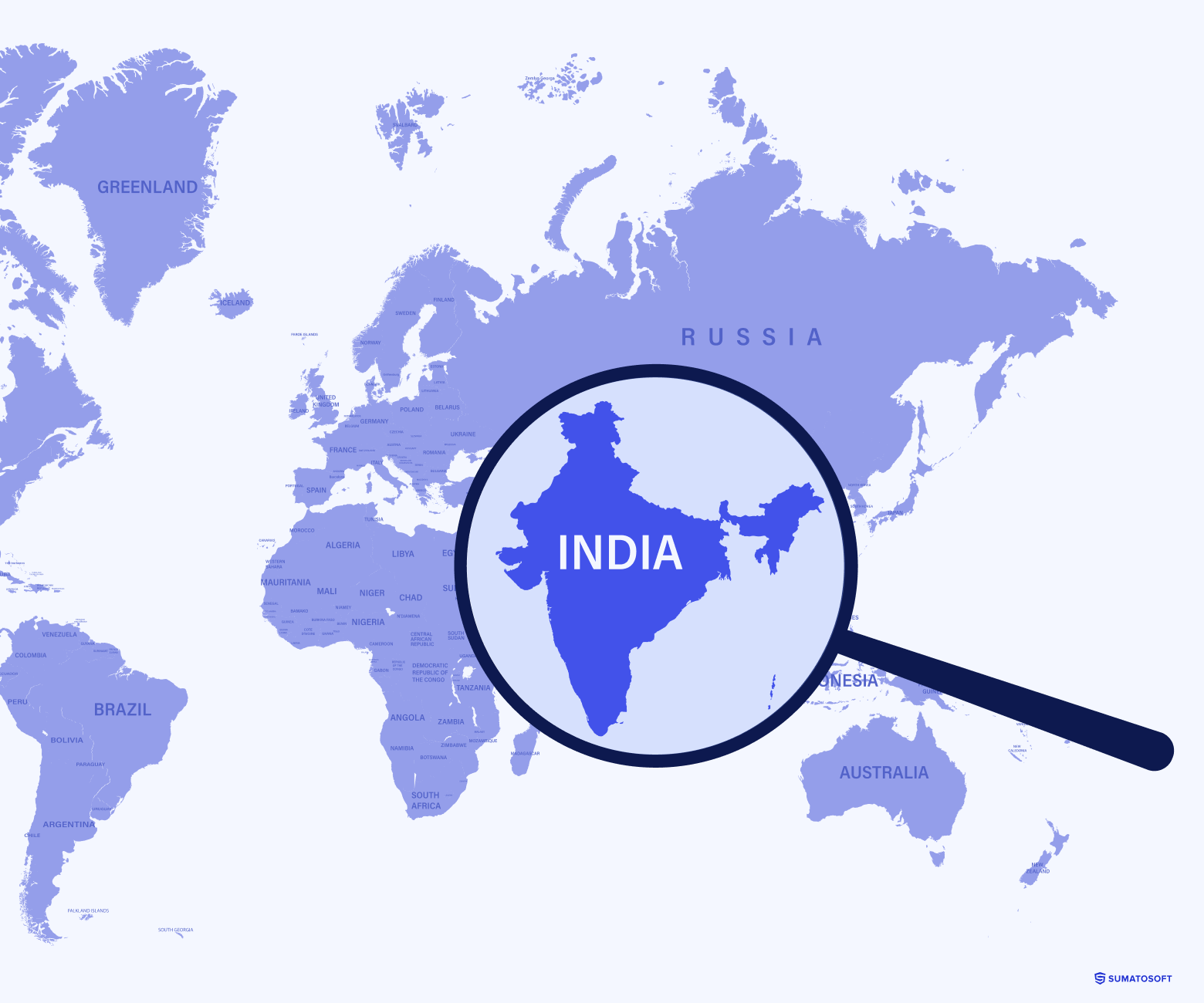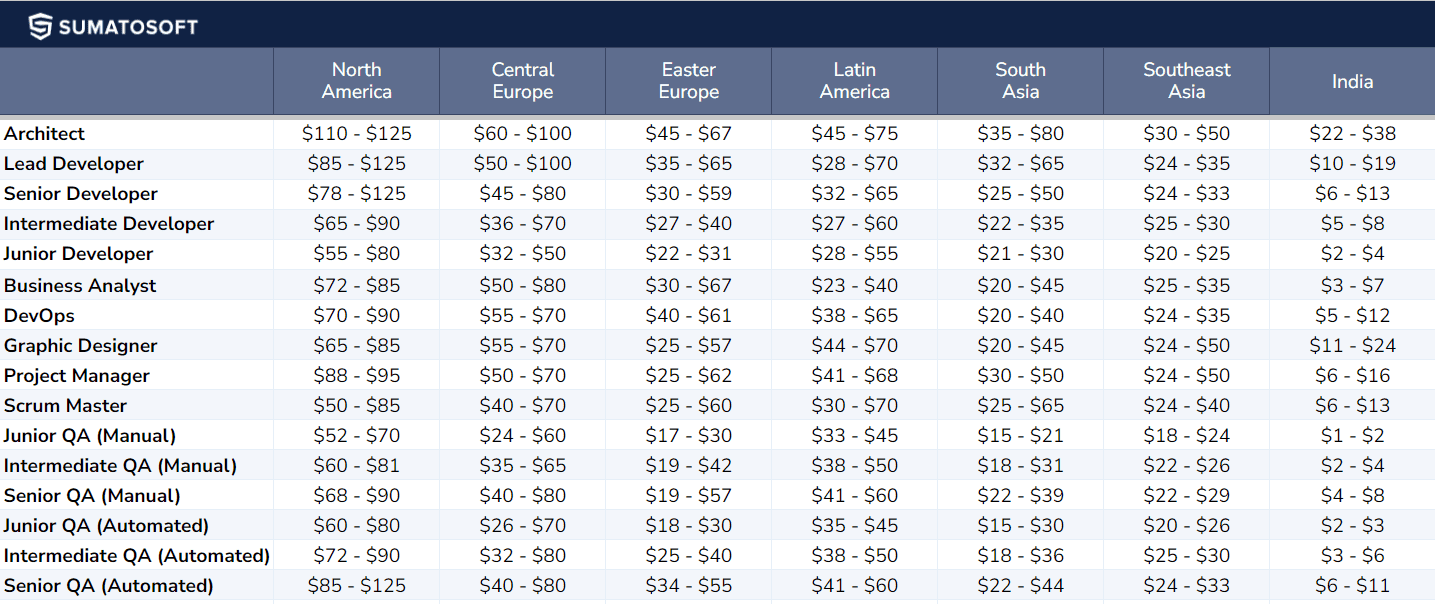Software Outsourcing Rates [2024 Updated] – Overview


Outsourcing is commonly divided into offshore, nearshore, or onshore outsourcing. The change of these terms depends on the company’s geographical position in the world. For instance, if a company is situated in Eastern Europe, it’s nearshore for Western Europe, and offshore for the United States of America/Australia. South America is nearshore for North America, but offshore for Europe. Finally, onshore outsourcing (also known as domestic outsourcing) is the obtaining of services from a provider outside a hiring company but within the same country. In short, it’s all about the distance from the hiring company.
Reasons why companies outsource
There are several reasons why a company may resort to outsourcing its software development needs. Some of the most common ones include:
- reducing and controlling costs.
- gaining access to the best capabilities and higher expertise.
- freeing internal resources.
- increasing efficiency for time-consuming tasks.
As a result, the outsourcing of software development offers a wide range of benefits. The use of leading technologies and practices, the acceleration of time-to-market, and the expertise that high-quality development teams bring are just a few to name. However, one of the most attractive bonuses is the ability to optimize the budget by paying less for considerably higher-quality software.
For instance, according to ISG, if you just take into account IT outsourcing contracts worth over $5m a year, globally there are nearly 3,000, worth over $270bn (£175bn). These stats are impressive, to say the least.
Quality over costs
Despite the obvious reasons mentioned in the previous paragraph, a company should always pay attention to the quality of outsourcing. In other words, one should never consider IT outsourcing costs as the primary objective when outsourcing. As many negative reviews say, companies that declare “the lowest prices in the industry” as their main competitive advantage underperform and, subsequently, deliver unsatisfying results.
This means that you will have to pay a lot more than expected just to get redo the unsatisfactory things. We are sure that you won’t be happy to deal with that. Thus, concentrate on your partner’s corporate values. Be sure to find out what technological innovation and expertise can your technological ally brings to your project.
Cost savings
TCE (the total cost of engagement) is a list of expenses unrelated to software development hourly rates. For instance, when a company is hiring its own in-house developers, TCE includes their salary, taxes, retirement compensation, etc. This way, when a company decides to outsource, many of these costs vanish. However, if you plan to visit your partner overseas, be sure to include the costs for traveling and accommodation.
Factors that define the outsourcing rates
There are 3 major factors that define the software development hourly rates you may face when contacting your future partner – location, experience, and length of the project.
Location
As a matter of fact, the prices may drastically vary depending on the region. The average price in the US is $80-$110 – will serve as a benchmark for comparing software development hourly rates. Now let’s check 4 main destinations for outsourcing.
Eastern Europe

Famous for their professional skills and expertise, the developers in Eastern Europe are considered as the most demanded on the market. According to many resources, Eastern Europe’s software development hourly rate is $35-45 (ranging from 25 to 50 dollars). So it’s a brainer to conclude why IT development outsourcing is really blooming in Eastern European countries. For instance, the world-known media like Reuters or Wall Street journal praise Belarus as “the Silicon Valley of Eastern Europe”. The sector can be divided into two branches: Ukraine, Belarus, and Russia and Poland (Eastern), Hungary, Bulgaria, Romania, and the Balkan countries (Western).
Central, Western and Northern Europe

European developers gained their indisputable reputation over the years. However, the huge demand for developers and the high costs of living (in comparison to Eastern Europe or Asia) have caused a sort of insufficiency making the average software development hourly rates for IT services close to $50-$60 per hour.
Asian region

Outsourcing of IT services has played an important role in the economy of many countries in Asia, especially, India and China. Meanwhile, as commonly known, the quality of services isn’t always good. Meanwhile, the average rate for this region is $25-$30 which is the lowest on the list.
India region

We put more effort into the description of this region since it has gained traction in IT outsourcing in recent years due to its cost-effective services and extensive talent pool. The average rate for this region is $6 – $11.
The country’s large population of almost 1.5 billion people contributes to a steady stream of technically skilled professionals. There are several tech hubs like Bangalore and Hyderabad that are supported by government policies, including tax benefits, Special Economic Zones, and IT parks.
Additionally, English is quite prevalent among Indians which could simplify the communication with international Clients. However, there is a huge opposite side.
Low Quality for Low Costs
In some instances, companies in India may prioritize short-term gains over long-term Client relationships. This approach can manifest in prioritizing upfront payments without a consistent commitment to project completion.
At SumatoSoft, we’ve encountered cases where Clients have come to us with projects left unfinished by Indian companies. These Clients experienced a sudden halt in communication, with Indian firms becoming unresponsive for months, leaving projects incomplete.
Time Zone Difference
The average time difference between India and the USA ranges from 9.5 to 12.5 hours. This considerable time gap can create challenges in real-time collaboration and coordination, potentially leading to delays in project milestones and extended turnaround times for communication and feedback.
Cultural Differences
Indian professionals often use indirect communication and may avoid direct negation. For instance, in Indian culture, saying “no” directly can be considered impolite. This might lead to Indian team members agreeing to deadlines or project scopes that are unrealistic, rather than openly discussing potential issues.
Moreover, Indian corporate culture tends to be more hierarchical than in many Western countries. This hierarchy influences decision-making processes, where managers or team members aren’t allowed to voice opinions or project updates until they get approval from higher-ups.
Language Barrier
Despite the prevalence of English, the Indian English dialect differs from the American one. That often leads to misunderstanding due to linguistic nuances. The situation is further compounded by a cultural tendency to avoid asking questions or explicitly stating potential problems during the development process.
High Specialist Turnover Rate
The IT sector in India is competitive, and skilled professionals often have multiple opportunities, leading to higher turnover rates and often specialist replacement.
How to Choose an IT Outsourcing Country?
In order to find the most efficient and suitable country for software development collaboration, you need to pay attention to several key factors
- Define your budget and compare average software development hourly rates.
- Study the state of the IT industry in the region.
- Consider the time difference you’re ready to cope with.
- Define the cultural fit suitable for you.
- Consider if security is essential for your project.
Experience
Technical and industry expertise, and – eventually – overall outsourcing experience play a key role in software development hourly rates formation. It’s quite natural that senior developers cost more than junior ones, but, still, you can find companies providing experienced senior developers for the same rate as junior engineers in your country. Moreover, companies that have a great record of successful projects through the years certainly have the ability to provide better rates than companies without experience.
Length of the project
In general, lasting engagements with large teams will always come with an increase in the overall cost of outsourced IT, but provide greater value in the long term. Software development companies have bigger benefits from providing bigger teams of developers over a long period of time. Because of this, companies are often willing to offer better rates to clients who need more of their services for a long period of time. If your software engagement requires 20 developers on a two-year time commitment, you may expect to pay less than if your engagement only requires 3 or 5 developers for a period of a year.
Outsource requirements
And finally…
In order to obtain satisfying results, a hiring company should:
– Clarify the company’s goals and objectives
– Follow a strategic plan
– Carefully select a technological partner
– Maintain relationship management
– Properly structured subcontract and vendor agreements
IT Outsourcing Rates 2024
This chart shows the overall prices for the 2024 year:

We wish you good luck with your project and happy outsourcing! If you have any questions about outsourcing, don’t hesitate to get in touch with SumatoSoft team!
Let’s start
If you have any questions, email us info@sumatosoft.com



